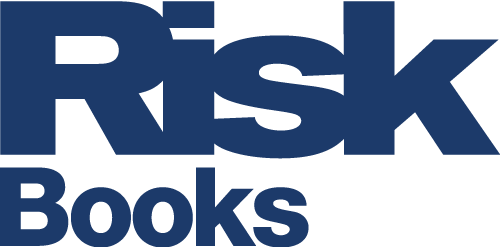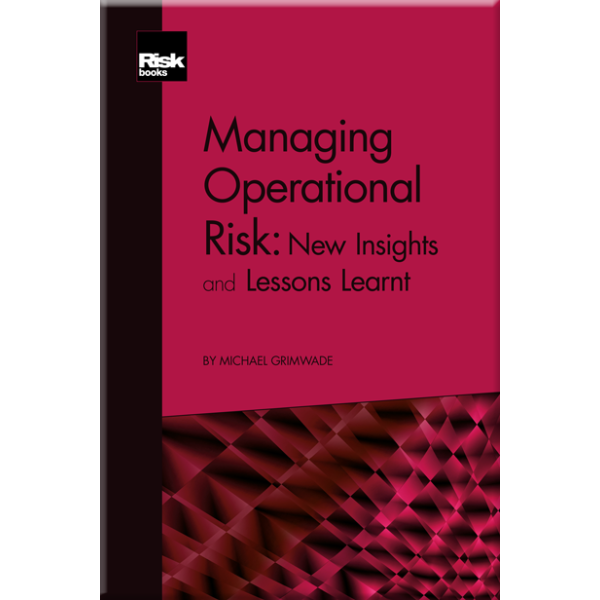Managing Operational Risk: New Insights and Lessons Learnt
Managing Operational Risk: New Insights and Lessons Learnt addresses the root causes of the unprecedented operational risk losses suffered after the financial crisis; the new and emerging operational risk threats; and the lessons to be learnt for those working within the sphere of operational risk. Through the use of case studies and analysis of industry trends, Michael Grimwade examines how we can make operational risk management more effective.
The recent financial crisis has led to unprecedented levels of operational risk losses. In Managing Operational Risk: New Insights and Lessons Learnt, Michael Grimwade, author and head of operational risk for MUFG’s International Securities Businesses, argues that these operational risk losses are readily explicable and could be repeated in the near future.
Managing Operational Risk: New Insights and Lessons Learnt examines the ways in which market and credit risks were transformed into operational risk losses, and how the current actions of both central banks and regulators may be unwittingly sowing the seeds for a new wave of losses.
The book is structured around the following three questions:
- Why did banks suffer such large operational risk losses during the financial crisis?
- What is going to cause banks to suffer large operational risk losses again in the future?
- What should operational risk managers do differently?
| ISBN | 9781782722861 |
|---|---|
| Navision code | MWAD |
| Publication date | 29 Jul 2016 |
| Size | 155mm x 235mm |
Michael Grimwade
Michael Grimwade
Michael Grimwade has worked in operational risk management for 20 years. He is currently Head of Operational Risk for MUFG’s International Securities Businesses.
Michael won a scholarship to Oxford to read zoology, and following graduation trained as a chartered accountant, before moving into consultancy, initially working on process improvement projects. Overlaps between the drivers of process inefficiency and operational risk led him to undertake his first operational risk management project in the mid-1990s, when working for what is now PwC Consulting. By the start of the new millennium, however, his disenchantment with the apparent lack of demonstrable commercial value provided by operational risk management prompted a brief return to cost reduction and process improvement.
Following the finalisation of Basel II in 2004, Michael moved back to operational risk management, initially as Operational Risk Director for Lloyds TSB's Wholesale & International Division, and subsequently as Head of Operational Risk & Compliance for the ~300 RBS and NatWest branches that are currently being spun-off as Williams & Glyn.
Operational risk management continues to evolve as a profession, and Michael has recently focused on sharing good practice via industry seminars, conferences and as a contributor to the Institute of Operational Risk’s ‘Sound Practices Guides’. In 2014, Michael’s efforts were recognised by the Institute, when he received an award for his 'Contribution to the Discipline of Operational Risk Management', primarily for his work on techniques for conducting and validating scenario analysis. In 2015 he was elected to the Board of the Institute, as Director with Portfolio for Regulatory & Industry Bodies.
Part I: What were the Root Causes of the Unprecedented Spike in Operational Risk Losses after the Global Financial Crisis?
1. Three spikes in Operational Risk losses
2. First-Order effects: Transforming Credit Defaults and Market Turmoil into Operational Risk Losses
3. Second-Order effects: Transforming Rising Unemployment and Falling Interest Rates into Operational Risk Losses
4. Conclusions and Root Causes
Part II: What are the New and Emerging Operational Risk Threats?
Introduction to Part II: What are the new and emerging Operational Risk threats?
5. Regulatory change: Part of a Perfect Storm
6. Macroeconomics Threats: Tax, Rising Interest Rates and New Asset Bubbles
7. New Technology: Changing Business Models and Risk Profiles
8. Three Horseman: Societal, Political and Environmental change
9. Backtesting to the Mid-1990s and Conclusions
Part III: What Lessons can the Profession Learn?
Introduction to Part III: What Lessons can the Profession Learn?
10. Defining and cascading Operational Risk appetites
11. Aligning Operational Risk Management Frameworks to Appetites
13. Estimating Exposures to Tail Events
14. Solutions for a Triumvirate of Seemingly Intractable Problems
15. Conclusions
Appendices
Appendix 1: The Chronology of the LIBOR Scandal
Appendix 2: Some Examples of Common Scenarios
Appendix 3: Mapping of Reputational Risk incidents to Operational, Conduct and Business Risks




